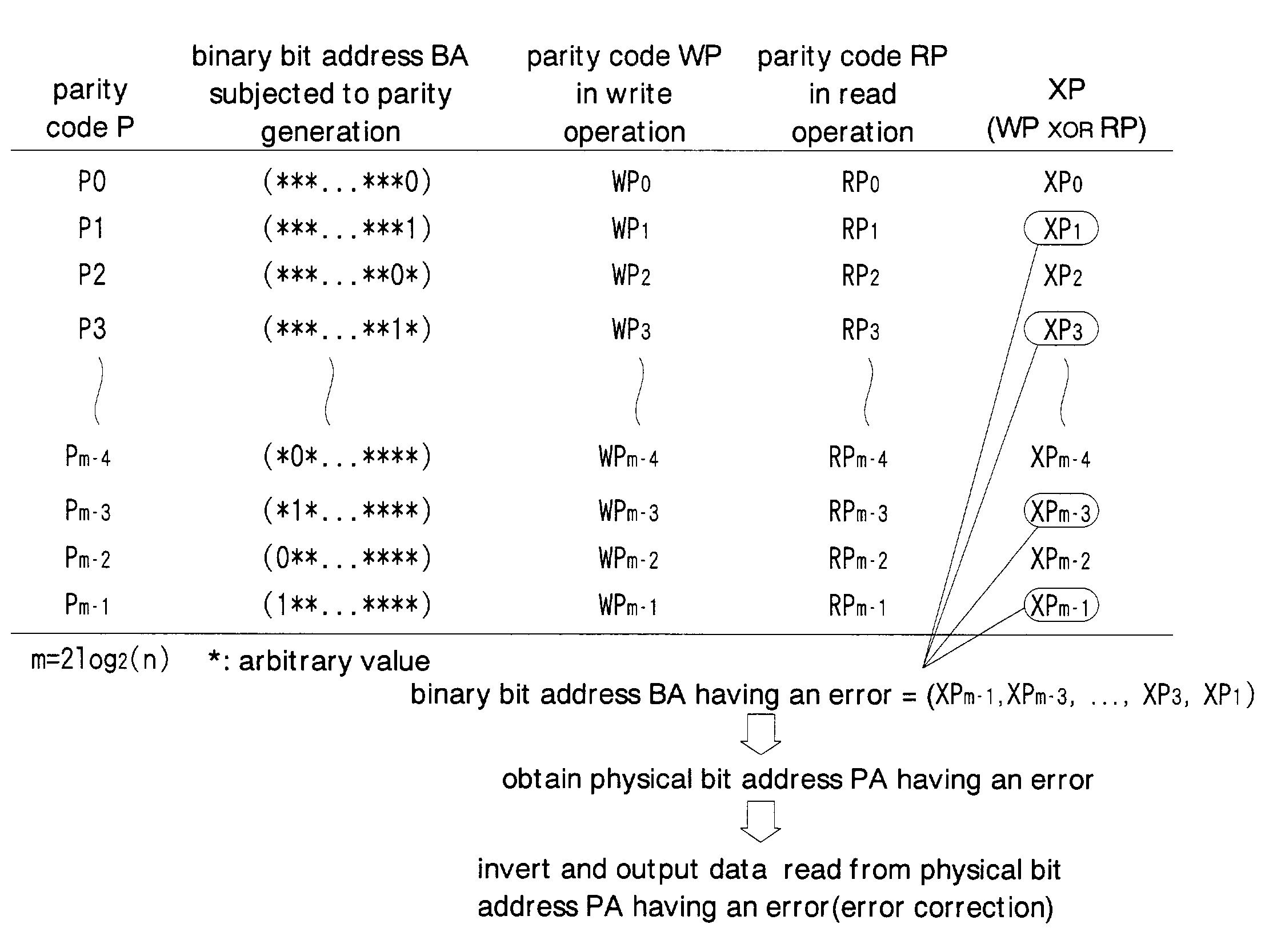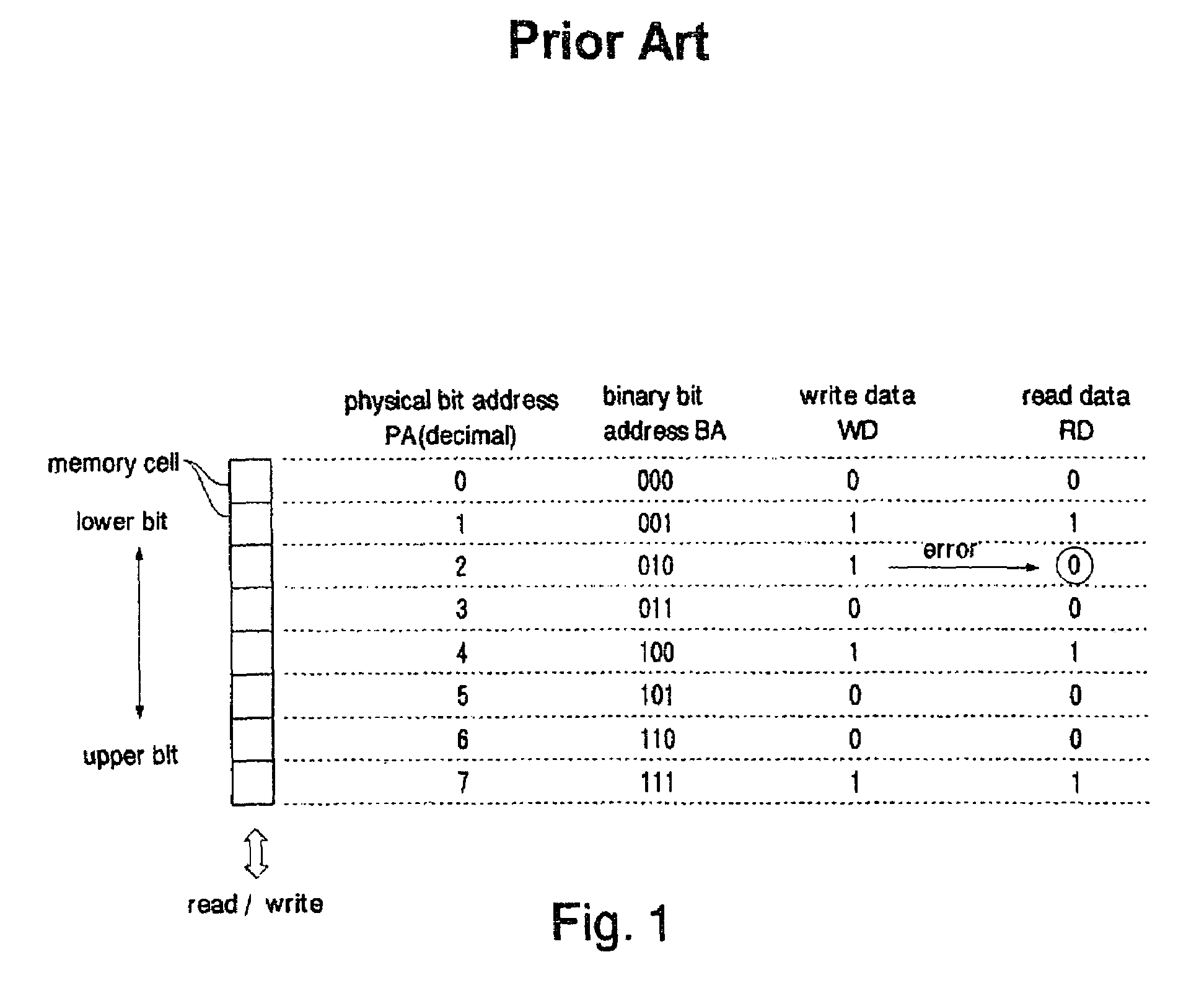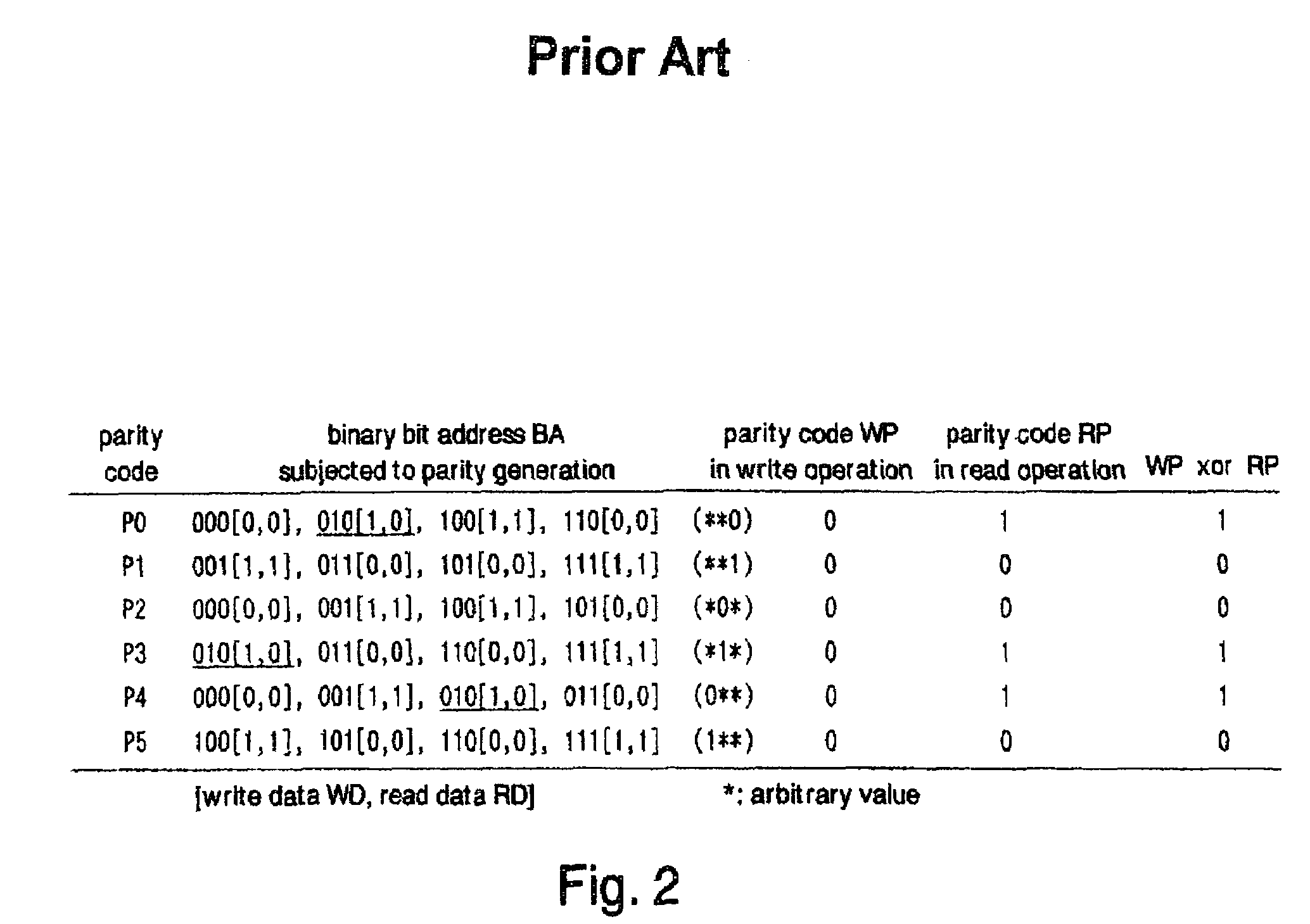Method for error detection/correction of multilevel cell memory and multilevel cell memory having error detection/correction function
a multi-level cell memory and error detection technology, applied in the field of error detection/correction of multi-level cell memory and multi-level cell memory having error detection/correction function, can solve the problem that memory cells capable of storing two bits of information can lose control of threshold voltage in write operations, data error occurs in the memory, and the probability of two-bit errors in the same memory cell is higher
- Summary
- Abstract
- Description
- Claims
- Application Information
AI Technical Summary
Benefits of technology
Problems solved by technology
Method used
Image
Examples
first embodiment
[0113]FIG. 8 shows the present invention. The multilevel cell memory is formed as a floating gate type four-level cell flash memory capable of storing two bits of information in each single memory cell. In this flash memory, the amounts of carriers to be trapped in the floating gates of memory cells are adjusted in four levels according to write data. Then, four types of memory cell currents corresponding to the threshold voltages of the memory cells are detected to read two bits of data stored in the memory cells.
[0114]The flash memory has a page buffer 10 and a memory core 12, as well as not-shown input circuits, output circuits, control circuits, and the like. The page buffer 10 has a buffer control circuit 14, data buffers 16 and 18, and an ECC control circuit 20. The memory core 12 includes a memory cell array 22 which is composed of a data area and a spare area, including a plurality of pages, and an operation control circuit 24 which performs read operations, write operations...
third embodiment
[0188]FIG. 27 shows memory cell addressing in the For ease of description, the number of memory cells to be accessed simultaneously in this example shall be four. That is, eight bits of data is read / written from / to memory cells by a single access. The individual bits of the memory cells are designated by physical addresses PA. The memory cells are designated by respective binary cell addresses BCA.
[0189]Since the memory cells store two bits each, there are provided a single first group A1 and a single second group Bi corresponding to this first group A1.
[0190]FIG. 28 shows the combinations of binary first addresses BA1 for generating the first parity codes PC1.
[0191]FIG. 29 shows the combinations of binary second addresses BA2 for generating the second parity codes PC2.
[0192]FIG. 30 shows the details of the first generating circuit 32a and the second generating circuits 32b shown in FIG. 26. The first generating circuit 32a generates the first parity codes PC1 shown in FIG. 28 (L0A...
PUM
 Login to View More
Login to View More Abstract
Description
Claims
Application Information
 Login to View More
Login to View More - R&D
- Intellectual Property
- Life Sciences
- Materials
- Tech Scout
- Unparalleled Data Quality
- Higher Quality Content
- 60% Fewer Hallucinations
Browse by: Latest US Patents, China's latest patents, Technical Efficacy Thesaurus, Application Domain, Technology Topic, Popular Technical Reports.
© 2025 PatSnap. All rights reserved.Legal|Privacy policy|Modern Slavery Act Transparency Statement|Sitemap|About US| Contact US: help@patsnap.com



